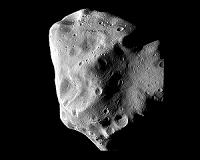 |
Sydney, Australia (SPX) Jul 12, 2010 The recent recovery of Japan's never-say-die Hayabusa spacecraft has amazed the general public. It's also helped to ensure that there will be a Hayabusa 2 mission in the future, despite problems elsewhere in Japan's space program. This is good news. Hayabusa had more than its fair share of troubles, but managed to demonstrate how effectively most of the spacecraft was engineered. The mission of Hayabusa 1 and its planned successor is also essential. We need to understand more about the makeup of asteroids for scientific, engineering and possibly defensive reasons. But Hayabusa was disappointing in one major field. The principal goal of the mission was sample retrieval, and it did not perform well in this regard. Scientists are painstakingly examining tiny fragments of material inside the sample return capsule, but are still unsure if they represent fragments of the asteroid Itokawa or contamination from Earth. If the fragments came from Itokawa, they will be useful to scientists, and make the sample- return phase of the mission partially successful. But Hayabusa should have collected more than this. Hayabusa used a unique method for retrieving samples. The spacecraft approached the asteroid and placed an extendable horn on its surface. A small pellet was then fired like a bullet at the surface. Fragments of the asteroid were supposed to be blown off the surface, and be collected inside the horn. This wasn't very effective. By itself, this is a useful scientific result. The surface of the asteroid was obviously harder to blow apart than engineers had suspected. We can gain from this knowledge in planning future missions. How, then, should we consider retrieving samples from asteroids in the future? There are plenty of methods, and some will be more effective than others. The type of method used will also vary with the class of asteroid and its composition. It also depends on exactly what you want to extract, and how pristine you want your sample to be. I will now take this opportunity to explore some alternative sample collection techniques, which could be useful for Hayabusa 2 and other missions to asteroids.
Drill
Wipes
Ropes
Electrostatic Attraction
Magnetic Attraction
Gas
Adhesive
Rasp
Claw
Mighty Blow Dr Morris Jones is an Australian spaceflight analyst and author. Email morrisjonesNOSPAMhotmail.com. Replace NOSPAM with @ to send email.
Share This Article With Planet Earth
Related Links - Asteroid and Comet Mission News, Science and Technology
 Rosetta Spacecraft Returns Unique Glimpses Of Asteroid Lutetia
Rosetta Spacecraft Returns Unique Glimpses Of Asteroid LutetiaBonn, Germany (SPX) Jul 12, 2010 The European Rosetta spacecraft has achieved a further milestone on its journey to the comet Churyumov-Gerasimenko. On 10 July 2010 at 17:45 CEST, the orbiter flew past asteroid Lutetia on its second and final pass of the asteroid belt at about 15 kilometres per second - 54,000 kilometres per hour - merely 3162 kilometres from the asteroid. The confirmation was delivered at 18:10 CEST to E ... read more |
|
| The content herein, unless otherwise known to be public domain, are Copyright 1995-2010 - SpaceDaily. AFP and UPI Wire Stories are copyright Agence France-Presse and United Press International. ESA Portal Reports are copyright European Space Agency. All NASA sourced material is public domain. Additional copyrights may apply in whole or part to other bona fide parties. Advertising does not imply endorsement,agreement or approval of any opinions, statements or information provided by SpaceDaily on any Web page published or hosted by SpaceDaily. Privacy Statement |